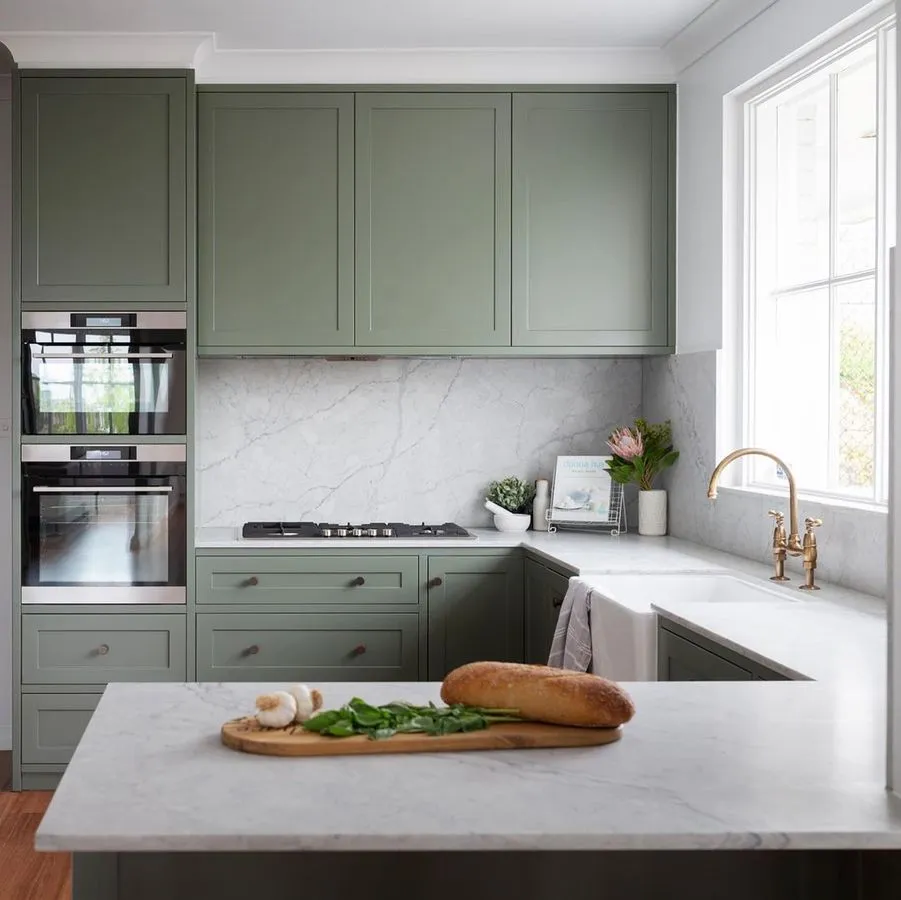Embracing Sage Green in Your Kitchen
Sage green has emerged as a top choice for kitchen decor, and for good reason. Its calming and versatile nature makes it a perfect backdrop for creating a dream kitchen. This soothing hue brings a touch of nature indoors, promoting a sense of tranquility and well-being. Whether you’re aiming for a modern, farmhouse, or traditional aesthetic, sage green seamlessly integrates into various design styles. It offers a refreshing alternative to stark whites and grays, imbuing your kitchen with a sense of understated elegance and timeless appeal. The beauty of sage green lies in its ability to transform a functional space into a visually pleasing and inviting heart of the home. This guide will explore how to integrate this wonderful color into your kitchen decor.
The Psychology of Sage Green
Understanding the psychological impact of color is crucial when designing any space, and the kitchen is no exception. Sage green is often associated with qualities like calmness, serenity, and balance. It evokes feelings of nature, growth, and renewal, creating a space that feels grounded and refreshing. This color has a restorative effect, making it an ideal choice for a room where you spend time preparing meals, gathering with loved ones, and starting your day. The soft, muted tones of sage green also contribute to a sense of spaciousness and airiness, making smaller kitchens feel larger and more inviting. By incorporating sage green, you’re not just decorating; you’re creating an environment that fosters well-being and positive emotions.
Creating a Calming Kitchen Space
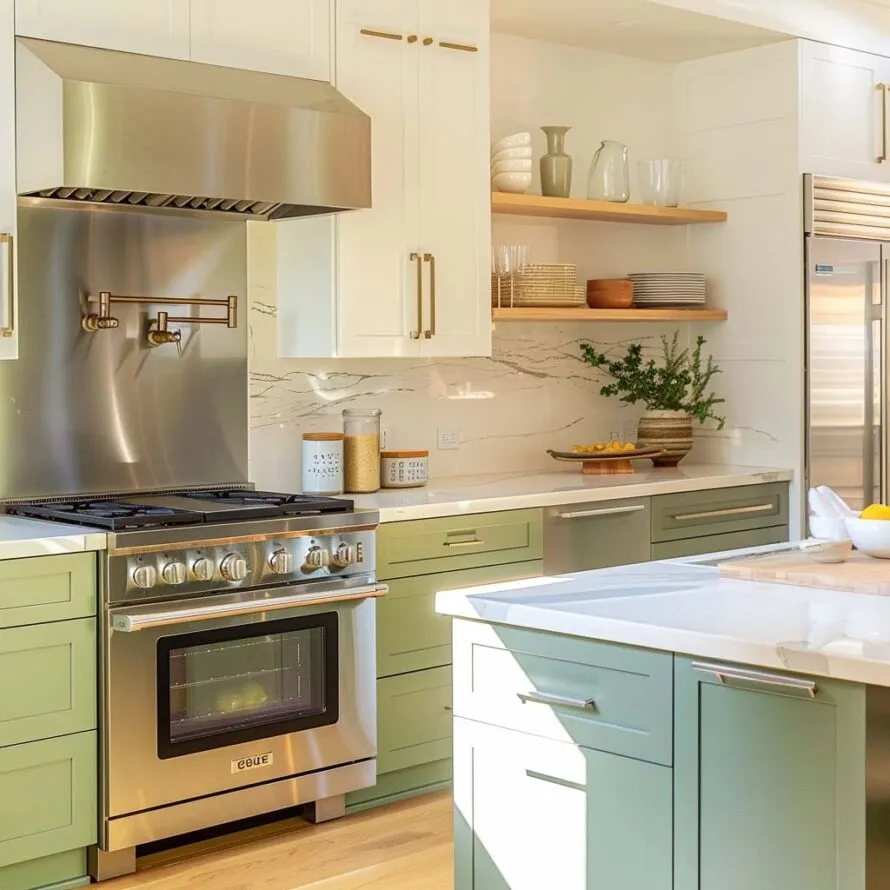
The kitchen should be a sanctuary of calm and focus. Sage green is your starting point. Pair sage green walls with natural wood elements for warmth, and consider incorporating other natural textures. Minimize clutter, and use open shelving to display only your favorite items. Ensure there’s plenty of natural light; if not, incorporate warm-toned artificial lighting. Remember that the goal is to create an atmosphere where you feel relaxed and inspired. Consider adding a small herb garden on your windowsill, and use organic, natural materials throughout the space. A calm kitchen is not just visually appealing; it enhances your overall experience.
Sage Green Kitchen Paint Color Selection
Choosing the right sage green paint color can be tricky, with a wide range of shades to choose from. Consider your kitchen’s natural light, the size of the room, and the overall aesthetic you want to achieve. Experiment with paint samples before committing to a full coat. Light sage greens will brighten a space, while deeper shades can add a sense of coziness and drama. Don’t be afraid to compare different brands and finishes; some may have undertones that work better with your existing decor. Ensure the paint you choose is moisture-resistant and easy to clean, especially for a kitchen environment.
Choosing the Right Sage Green Shade
Different shades of sage green can create vastly different effects. A light sage with gray undertones will feel modern and airy, while a sage green with more yellow can create a warmer, more inviting atmosphere. Consider the surrounding colors and the overall style of your home. If you prefer a more traditional look, a muted, dusty sage will complement classic elements, while a brighter, more vibrant sage works well in contemporary settings. Take a look at your current decor; consider how different shades of sage green will interact with existing colors and textures. Testing samples in different lighting conditions is critical.
Considering Natural Light
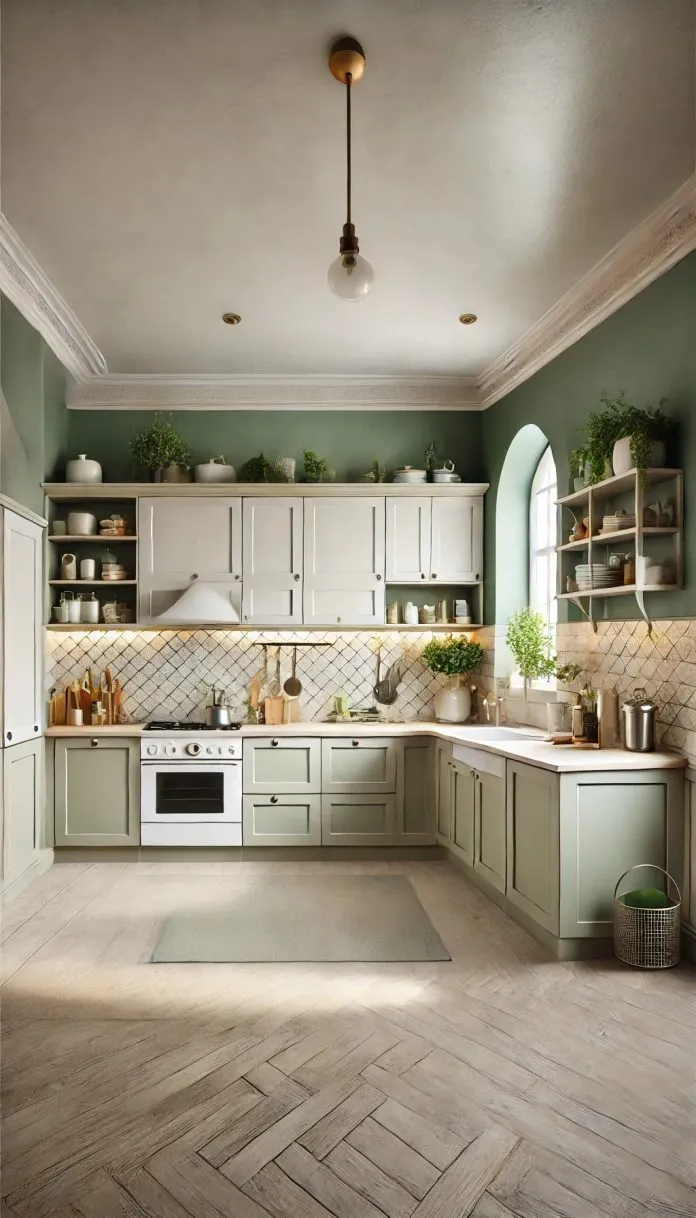
Natural light plays a vital role in how a paint color appears. A sage green that looks perfect in a showroom might appear completely different in your kitchen, depending on the amount of sunlight. North-facing rooms tend to have cooler light, which can make sage greens appear more muted. South-facing rooms get warmer light, which will enhance the green’s warmth. Observe your paint samples at different times of the day to see how they change in the light. If your kitchen lacks natural light, consider lighter shades of sage green to brighten the space, and supplement with warm-toned artificial lighting to combat any coolness.
Sage Green Kitchen Cabinetry Ideas
Painting your kitchen cabinets sage green is a bold and transformative design choice. It instantly updates your kitchen with a fresh, modern aesthetic. Consider the existing style of your kitchen. Sage green works well with various cabinet styles, from Shaker to modern flat-panel designs. The color can be applied to both upper and lower cabinets, or you might opt for a two-tone look, pairing sage green cabinets with a contrasting island or neutral wall color. Prepare your cabinets properly by cleaning, sanding, and priming. This will ensure the paint adheres well and provides a smooth, durable finish. Choose a cabinet paint specifically formulated for durability and easy cleaning.
Sage Green Cabinets Design Inspiration
Draw inspiration from design magazines, websites, and social media. Consider different sage green tones: a darker, deeper sage green can give a sense of sophistication, while a lighter, more airy sage will create a feeling of spaciousness. Pair sage green cabinets with different countertop materials: white quartz countertops provide a clean, modern contrast, while warm-toned butcher block countertops offer a rustic appeal. Consider hardware finishes such as brass, gold, or matte black. Don’t be afraid to mix and match styles and create a unique design that reflects your personality and complements your home’s architecture.
Cabinet Hardware and Accents
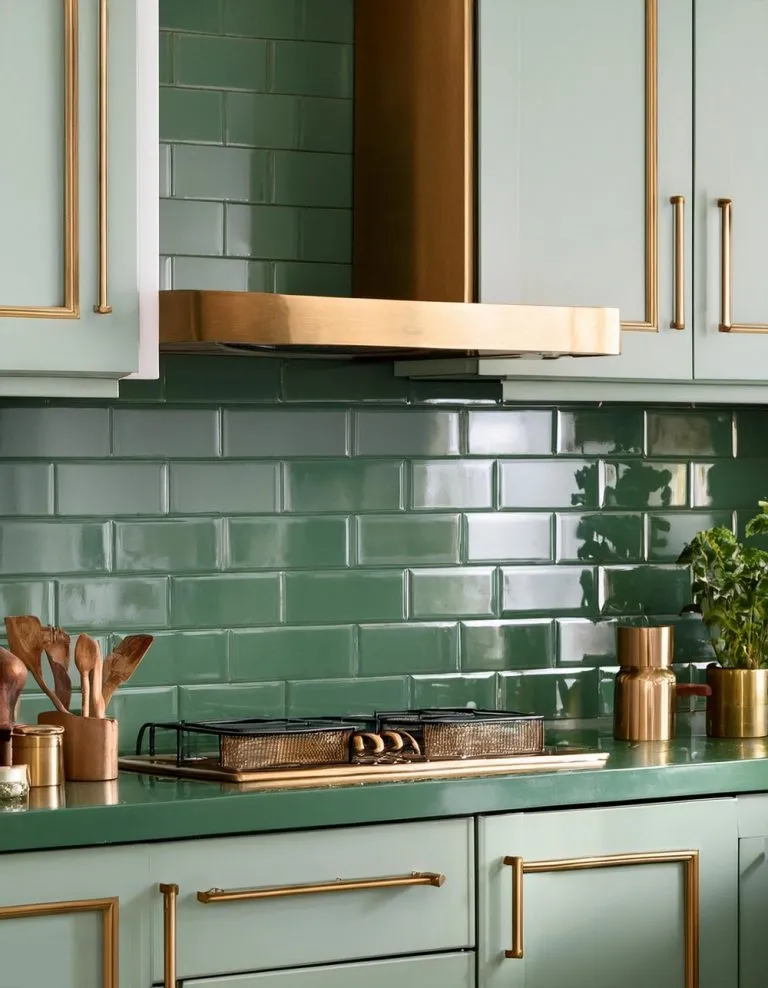
Cabinet hardware is the jewelry of your kitchen and can dramatically impact the overall look. Consider the style of your kitchen and the shade of sage green you’ve chosen. Brass or gold hardware adds a touch of elegance and warmth, especially against darker sage greens. Matte black hardware creates a more modern and industrial feel. Silver or chrome hardware offers a clean, minimalist aesthetic. The hardware style also needs to complement the cabinet style. For example, a shaker cabinet looks great with classic knobs and pulls. Pair the hardware with other accents in your kitchen, such as lighting fixtures and faucet finishes, to create a cohesive design.
Sage Green Kitchen Wall Decor
Wall decor plays a significant role in enhancing the aesthetic of your sage green kitchen. The right wall decor will add personality, texture, and visual interest. Consider the size and layout of your kitchen, as well as the overall style. Choose art pieces that complement your existing decor, and consider mixing different sizes and styles. Frames can create a sense of visual interest, too. Wall decor goes beyond artwork; open shelving, floating shelves, or a decorative plate rack add to the look. The key is to add character while keeping the space functional and visually appealing.
Adding Texture with Backsplashes
Backsplashes introduce both style and practicality to your kitchen. They protect the walls from spills and splatters. Think about the texture you’re going for: subway tiles, for example, provide a classic look, while textured or patterned tiles can add visual depth and interest. Materials such as ceramic, porcelain, glass, or natural stone can all work well with sage green. Choose a backsplash that complements the sage green; consider the undertones of the sage green to determine which backsplash colors will work best. A well-chosen backsplash adds personality and ties together your entire kitchen design.
Choosing the Right Backsplash Material
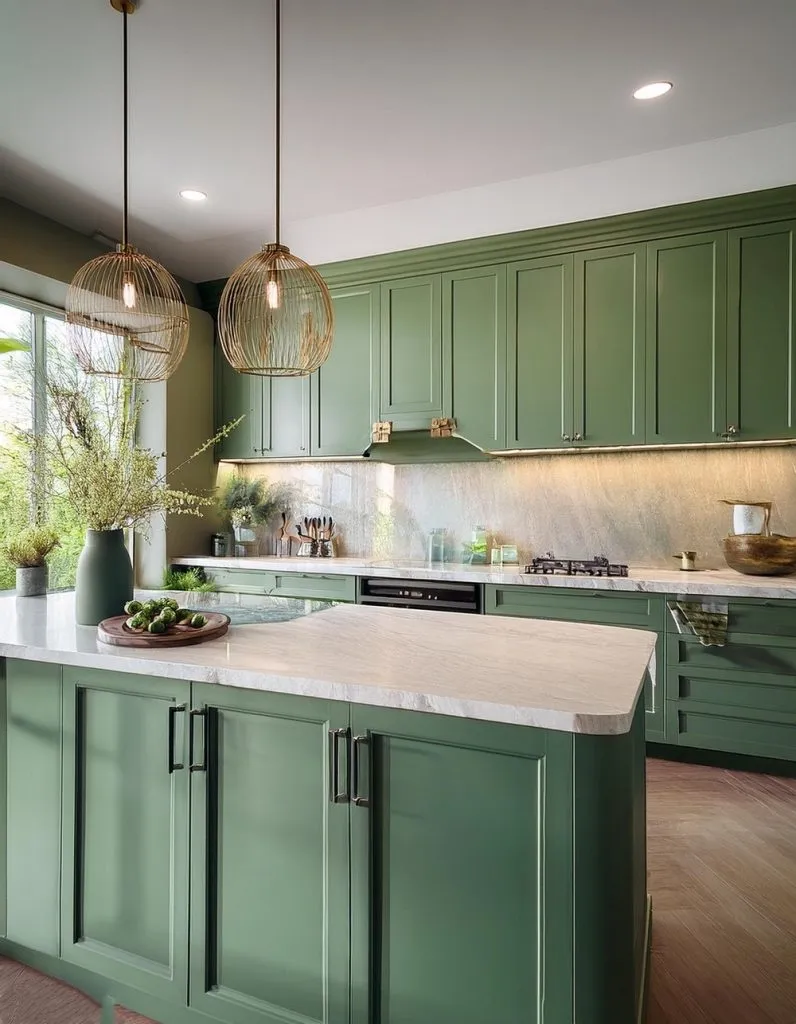
The material of your backsplash impacts the overall look and feel of your kitchen, along with considerations for maintenance. Ceramic and porcelain tiles are durable, easy to clean, and available in various colors, patterns, and textures. Glass tiles add a touch of glamour and reflect light, brightening up the space. Natural stone, like marble or granite, offers a luxurious look, but requires more maintenance. Consider the overall style of your kitchen and choose a material that complements your cabinets and countertops. Don’t forget about the grout; it impacts the final appearance and functionality.
Selecting Wall Art and Accessories
Wall art can add personality and style. Choose art pieces that complement the color palette and theme of your kitchen. Consider different types of art: paintings, prints, photographs, and even decorative plates. Think about the size and scale of the art in relation to your wall space and existing decor. Choose the right accessories. Incorporate open shelving to display your favorite cookbooks, ceramics, or plants. These accessories will help tie the space together, adding personality and visual interest to your sage green kitchen.
Sage Green Kitchen Countertop Pairings
Countertops have a huge impact on your kitchen’s overall look and functionality. Choosing the right countertop can enhance the beauty of sage green. Consider a white quartz or marble countertop for a clean, modern look, which provides a striking contrast. For a warmer aesthetic, consider a butcher block or wood countertop, adding natural texture and warmth to the space. The countertop color and material need to complement your cabinets, backsplash, and flooring. It must also align with your personal style and lifestyle.
Complementary Countertop Colors and Materials
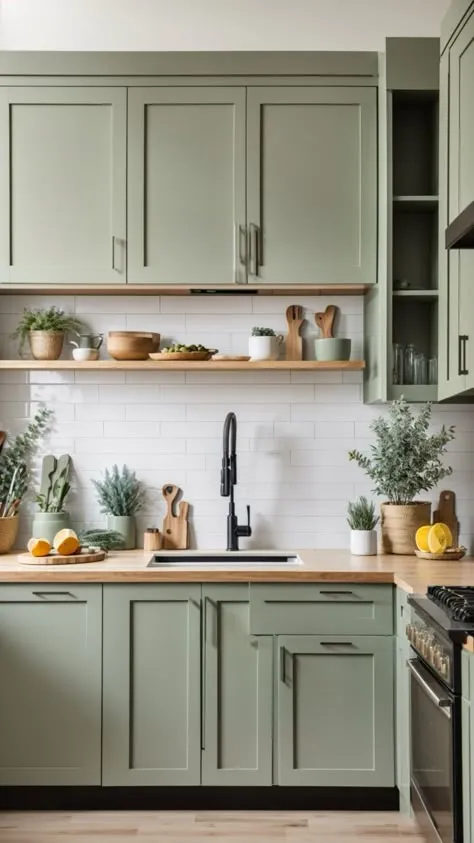
Consider how different countertop colors and materials will interact with the sage green. White countertops provide a bright and modern contrast, creating a clean and open feel. Gray countertops can complement the muted tones of sage green, creating a cohesive and calming effect. Darker countertops, such as black or charcoal, offer a bolder contrast, adding depth and sophistication. Consider the material: Quartz is durable and low-maintenance. Marble offers a luxurious, timeless aesthetic. Wood adds warmth and natural texture. Choose a countertop that complements your cabinets, backsplash, and flooring, and the overall style of your kitchen.
Durability and Maintenance Considerations
Think about how you use your kitchen and what kind of maintenance you’re willing to commit to. Quartz is a popular choice because it’s durable, stain-resistant, and easy to clean. Granite is also durable and heat-resistant, but may require sealing. Marble offers an elegant look, but can be prone to staining and requires regular sealing. Wood countertops offer a warm and natural look, but need to be sealed and maintained to prevent water damage. Make sure the material is suitable for heavy usage, such as food prep.
Sage Green Kitchen Flooring Options
Flooring contributes significantly to the overall aesthetic and functionality of your kitchen. It must withstand high traffic, spills, and moisture. Consider the color and texture of the flooring to complement your sage green cabinetry and walls. Wood flooring offers warmth and natural beauty, creating a seamless and inviting space. Tile flooring is durable and comes in various styles. The right flooring will tie the entire design together, creating a harmonious and functional kitchen.
Flooring Materials to Match Your Style
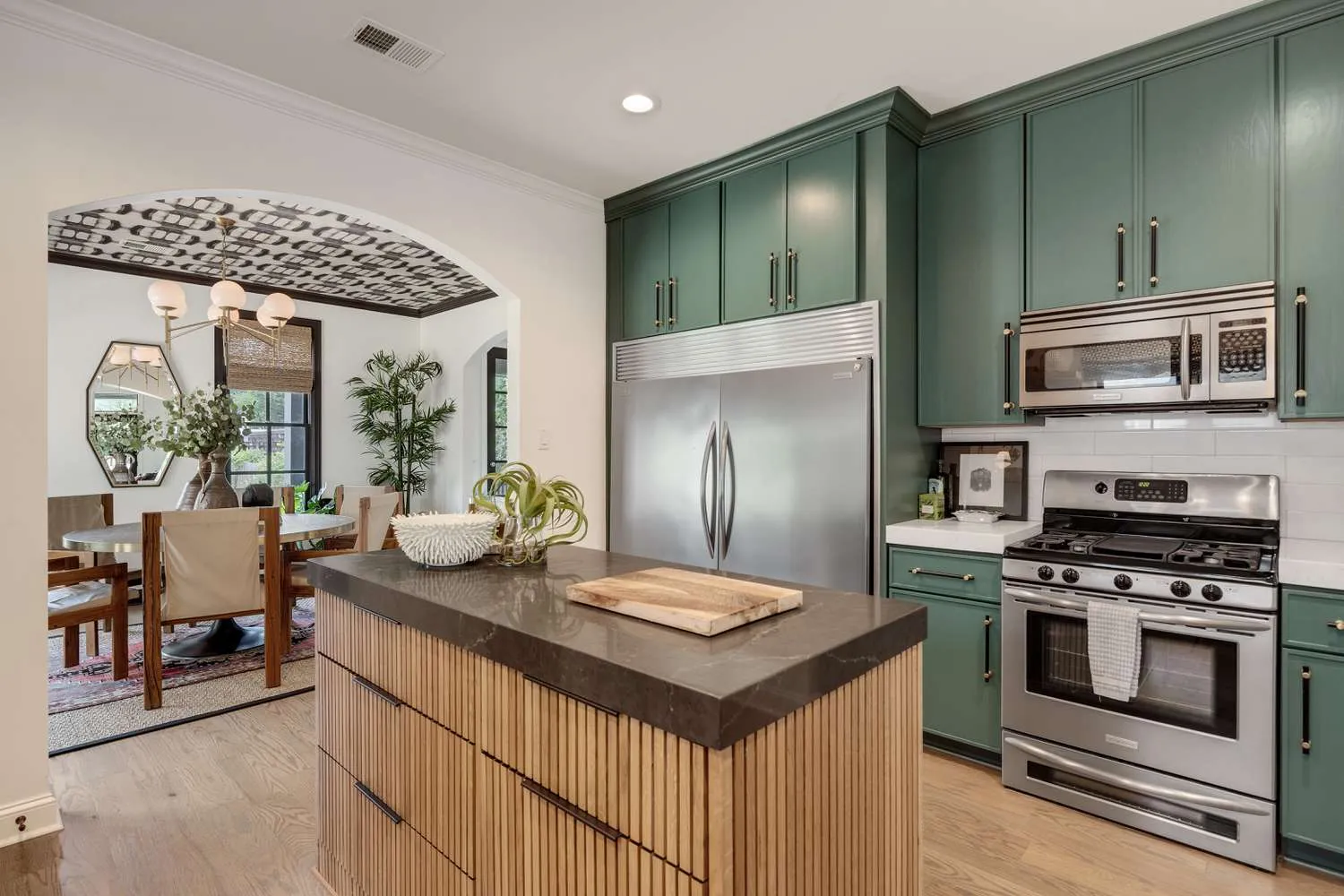
Different flooring materials offer distinct aesthetics and levels of practicality. Hardwood flooring adds warmth and natural beauty, creating a timeless look. Tile flooring is durable, water-resistant, and comes in various styles, including ceramic, porcelain, and natural stone. Vinyl flooring is a budget-friendly option, and it’s water-resistant, making it a great choice for kitchens. Consider your kitchen’s style: a farmhouse style can use wood or wood-look tiles. A modern kitchen can use sleek, large-format tiles. Think about your personal style and lifestyle when choosing your flooring.
Considering Kitchen Layout and Space
Your kitchen layout and space will influence your flooring choice. In small kitchens, lighter-colored flooring can make the space feel larger and more open. In larger kitchens, you have more flexibility with your flooring options, including patterns. Consider the flow of your kitchen, and how the flooring interacts with the cabinets, countertops, and other design elements. Your kitchen’s functionality needs to match the style. Consider a durable, easy-to-clean flooring that complements your sage green scheme.
Sage Green Kitchen Decor Accessories
Accessories help bring your kitchen design to life, adding personality and functionality to the space. These include everything from dish towels to countertop appliances. When designing a sage green kitchen, use accessories to bring in additional colors, textures, and patterns. The right accessories will complement your design, creating a cohesive and inviting space.
Incorporating Textiles and Soft Furnishings
Textiles and soft furnishings add warmth and texture to your sage green kitchen. Use dish towels, pot holders, and window treatments to introduce other colors. Consider natural materials like linen, cotton, and jute. Use patterns to add visual interest. These accessories can change with the seasons or your mood, allowing you to refresh your kitchen design easily.
Adding Greenery and Natural Elements
Greenery is a natural partner for sage green. Use potted herbs, small plants, or fresh flowers to bring a touch of nature into your kitchen. Natural elements, such as wooden cutting boards, woven baskets, and stone serving dishes, can add warmth and texture. Choose plants that thrive in a kitchen environment, like herbs that you can use when cooking. Adding natural elements will enhance the calming and inviting atmosphere of your sage green kitchen.
Sage Green Kitchen Lighting Design
Lighting is an essential element in any kitchen, and even more so in a sage green kitchen. It impacts both the aesthetic and the functionality of the space. Proper lighting can highlight the beauty of the color, create a functional and inviting atmosphere, and set the mood. Consider layering your lighting to create a well-lit and visually appealing space.
Layering Lighting for Ambiance and Function
Layering lighting involves using different types of light sources to create a comprehensive lighting scheme. Ambient lighting provides general illumination, such as recessed lights or a central pendant fixture. Task lighting focuses on specific areas, such as the countertop, with under-cabinet lights or pendant lights over an island. Accent lighting adds visual interest. Consider dimmers to adjust the light levels according to the time of day and the activity. Use a combination of these different types of lighting to create a well-lit and versatile kitchen.
Choosing the Right Light Fixtures
Choose light fixtures that complement the style of your kitchen. Consider the finish and design of the fixtures to match your cabinet hardware. For a modern kitchen, use sleek, minimalist fixtures. For a more traditional space, choose fixtures with ornate details. Ensure the light fixtures provide sufficient illumination for the tasks in your kitchen. Consider the color temperature of the light bulbs. Warm-toned bulbs create a cozy ambiance, while cool-toned bulbs offer more clarity. Choose lighting that enhances the beauty of your sage green kitchen.
In conclusion, a sage green kitchen offers a versatile and calming design choice. By understanding the principles of color psychology, selecting the right paint colors, and coordinating various design elements, you can create a stunning and functional space. Whether you’re renovating or simply updating your kitchen decor, incorporating sage green will transform it into a welcoming and inspiring heart of the home. Use the tips provided as a guide to create a dream kitchen.
